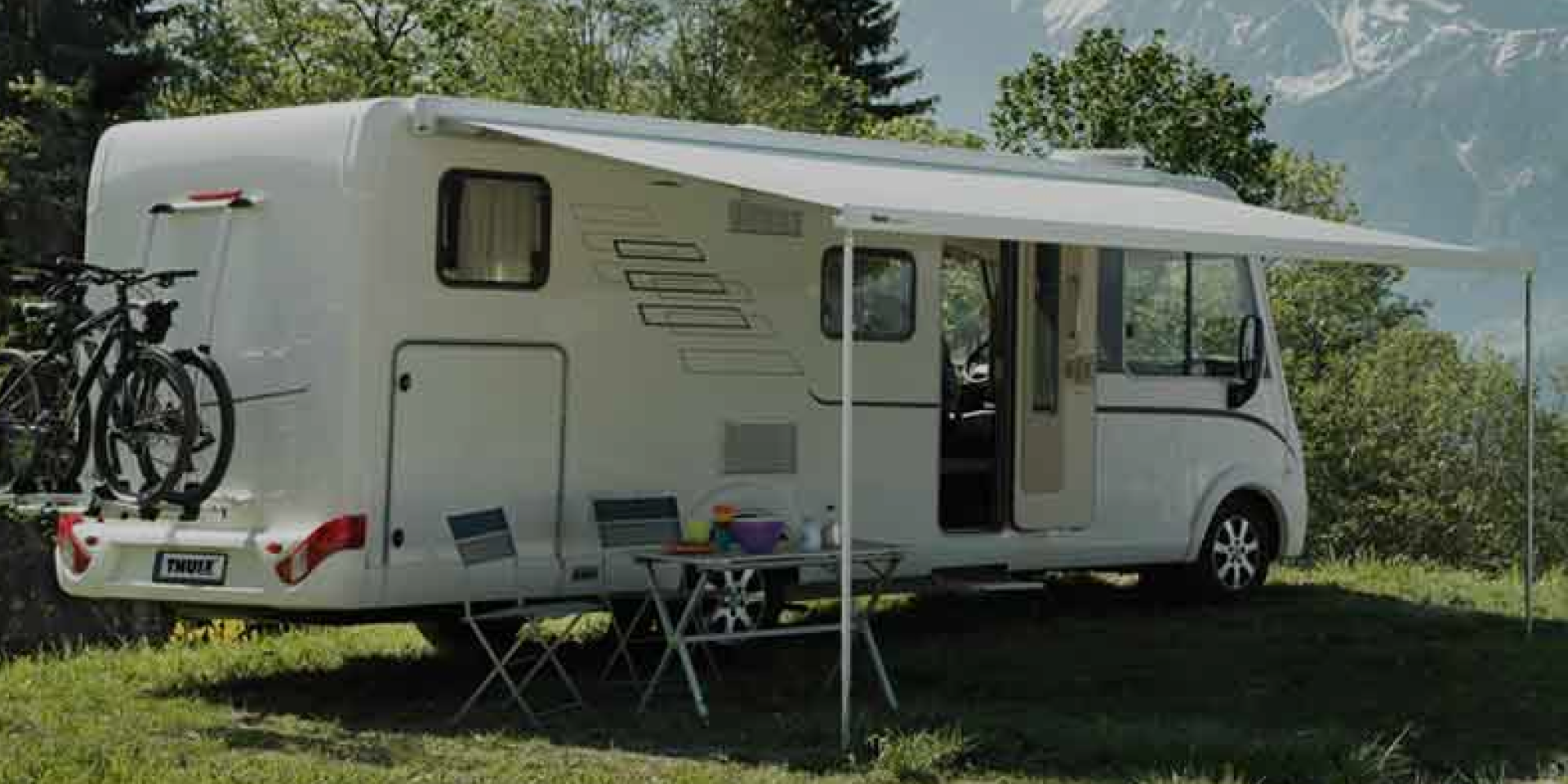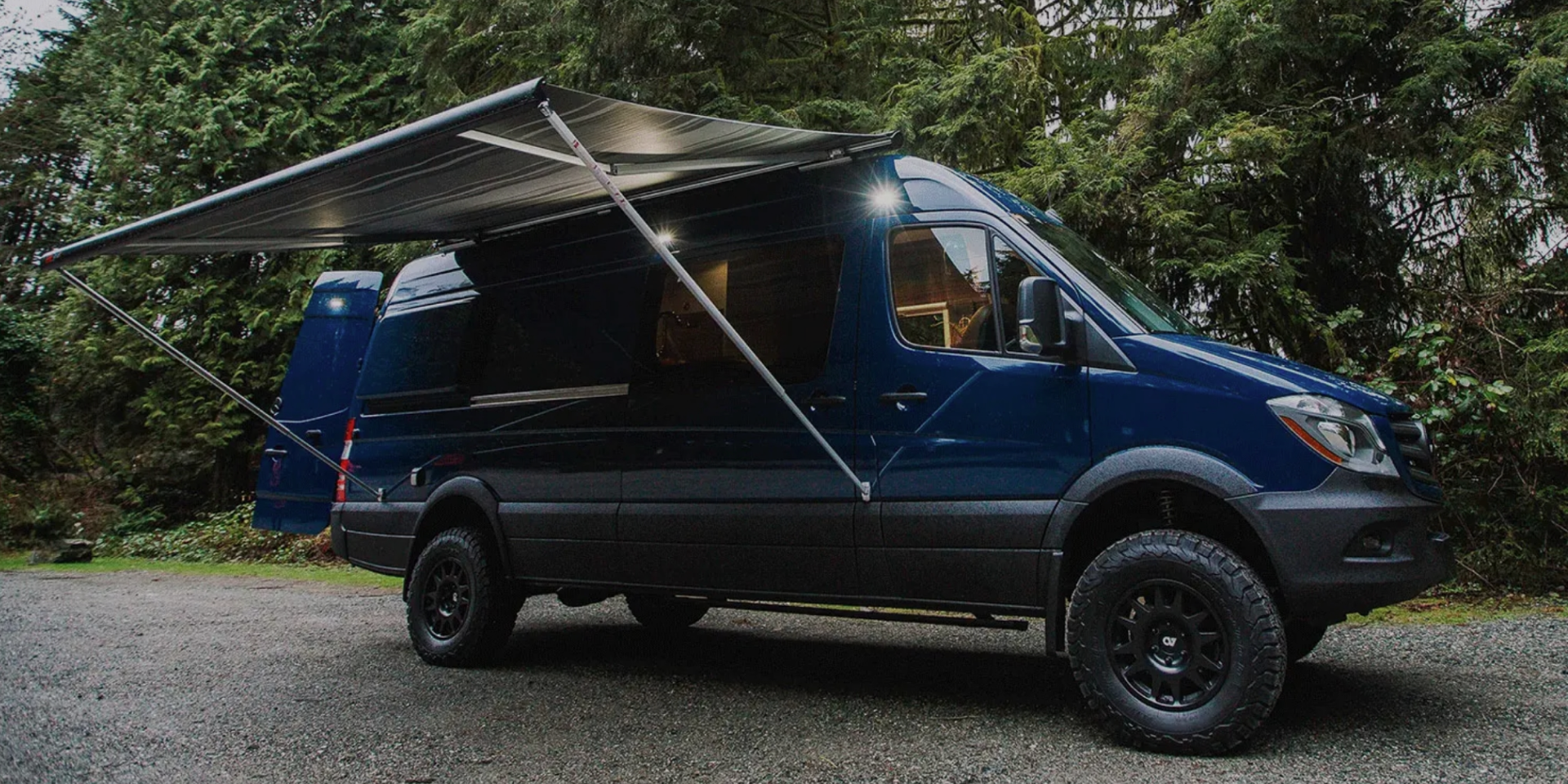Get in Touch with Us!
The Ultimate Guide to Camper Awning Canopies and Camper Hard Awnings

Whether you're a weekend warrior or a full-time vanlifer, one thing’s certain: outdoor comfort matters. Camper awnings provide protection from the elements, create shade on sunny days, and turn your outdoor space into a usable extension of your camper. This article dives deep into two of the most popular options: the camper awning canopy and the camper hard awning. We'll explore everything from construction materials to maintenance tips, helping you make an informed decision for your next adventure.
What Is a Camper Awning Canopy?
A camper awning canopy is a flexible, retractable awning made from fabric materials such as acrylic or vinyl. These canopies are attached to the side of a camper or RV and are designed to be rolled out or extended when parked.
They are typically supported by collapsible arms that can either anchor to the camper itself or extend to the ground. This makes them a versatile choice for temporary or semi-permanent outdoor coverage.
Camper awning canopies can range from manual crank-out versions to fully motorized models that extend with the push of a button. Some are even compatible with remote control systems or smart camper technology, offering hands-free operation.
Ideal for casual campers, pop-up trailers, or smaller RVs, these canopies help create a shaded outdoor area perfect for eating, relaxing, or shielding equipment from the sun.

What Is a Camper Hard Awning?
Unlike fabric-based canopies, a camper hard awning is a solid, often fixed or semi-permanent structure built with rigid materials like aluminum, fiberglass, or composite panels.
These awnings are usually integrated into the design of larger campers or motorhomes and may be installed during manufacturing or as an aftermarket upgrade. They are ideal for full-time campers, long-term stays, and users who frequently encounter extreme weather conditions.
Hard awnings are known for:
- Their robustness against wind, rain, snow, and UV exposure
- The ability to incorporate built-in features like lighting, solar panels, insulation, or gutters
- Being less prone to wear and tear compared to fabric awnings
While they are more expensive and heavier than canopy-style awnings, the added durability and year-round usability make them an excellent investment for serious campers.
Camper Awning Canopy vs. Camper Hard Awning: Key Differences
To understand which type suits your needs, consider the following detailed comparison:
|
Feature |
Camper Awning Canopy |
Camper Hard Awning |
|
Material |
Acrylic, vinyl, polyester |
Aluminum, fiberglass, composite panels |
|
Installation |
Easy, DIY-friendly |
Complex, often requires professional installation |
|
Weight |
Light (20-40 lbs average) |
Heavy (100-200+ lbs depending on size) |
|
Cost Range |
$200 – $1,200 |
$1,500 – $4,000+ |
|
Weather Durability |
Moderate; retracts in bad weather |
Excellent; withstands rain, snow, and wind |
|
Flexibility |
Retractable, adjustable |
Fixed or semi-permanent |
|
Maintenance |
Regular cleaning and fabric care |
Minimal upkeep; occasional inspection |
|
Ideal For |
Short trips, part-time RV users |
Full-time living, long-term camping |
Benefits of Using a Camper Awning Canopy
1. Budget-Friendly
Camper awning canopies are significantly less expensive than hard awnings. Even high-end fabric models remain affordable compared to rigid alternatives. This makes them a practical choice for those new to RVing or who camp occasionally.
2. Lightweight and Portable
Made from durable yet light materials, camper awning canopies won’t add much to your vehicle's weight, helping you stay within towing limits. They can also be easily removed or replaced if damaged.
3. Easy to Set Up and Retract
Manual awnings can be set up in under 10 minutes, while electric models deploy in seconds. This makes them perfect for short weekend stays or quick shade when stopping for lunch.
4. Customizable
Many brands offer add-ons such as mosquito nets, privacy screens, and side panels, allowing you to build a modular outdoor living room.
5. Wide Compatibility
Canopies are available for nearly every camper size and shape—from teardrop trailers to Class A motorhomes—making them a universally accessible option.
Advantages of Choosing a Camper Hard Awning
1. All-Weather Protection
Hard awnings offer superior resistance to wind, rain, and snow. Their fixed design allows them to remain extended even during inclement weather, which is not recommended for fabric canopies.
2. Insulation and Comfort
Some camper hard awnings are designed with insulation properties, making them effective in reducing heat and cold exposure. This added layer of protection enhances indoor comfort and energy efficiency.
3. Long-Term Durability
While more costly upfront, hard awnings require less maintenance and tend to last longer. Their rigid structure resists sagging, tearing, or sun damage.
4. Added Features
Many hard awnings come with built-in lighting, gutter systems, and integrated mounting points for solar panels or satellite dishes—boosting functionality without extra gear.
5. Increases Property Value
Adding a high-quality camper hard awning can increase the resale value of your RV, especially if the awning is professionally installed and includes added amenities.
Best Materials for Camper Awnings
Choosing the right material can greatly influence durability and performance.
For Camper Awning Canopies:
- Vinyl: Waterproof and mildew-resistant; heavier and easier to clean. Great for rainy regions.
- Acrylic: Breathable and UV-resistant; ideal for hot, sunny climates.
- Polyester: Affordable but wears out faster; suited for occasional campers.
For Camper Hard Awnings:
- Aluminum: Lightweight, corrosion-resistant, and strong. Common in retractable hard awning models.
- Fiberglass: Offers excellent insulation and rigidity. Ideal for campers in extreme climates.
- Composite Panels: Combine multiple materials to maximize durability, weight reduction, and heat resistance.
Installation Tips for Camper Awning Canopies
Installing a camper rv awning canopy can usually be done at home with basic tools.
Step-by-Step Guide:
Measure the width of your camper where the awning will mount.
Install the mounting rail using self-tapping screws or bolts.
Attach the canopy fabric by feeding it into the rail slot.
Secure the arms either to the camper wall or to the ground for freestanding setups.
Adjust tension and test extension/retraction mechanism.
Safety Tip: Always work on a level surface and have a friend assist you during installation to ensure safety and alignment.
How to Install a Camper Hard Awning
Installing a camper hard awning is more complex and often requires professional assistance.
Overview of the Process:
- Assess Structure: Verify that your camper’s wall or roof can support the additional weight.
- Install Brackets: Mount heavy-duty brackets using stainless steel hardware.
- Mount Awning Frame: Secure the awning box or frame to the brackets.
- Add Roof Panels and Seals: Ensure all joints are sealed to prevent leaks.
- Wire Accessories: If using lights or integrated tech, connect them to your camper’s electrical system.
Improper installation can lead to structural damage or leaks, so it’s best left to experienced technicians.
Seasonal Use and Weather Resistance
Camper Awning Canopy:
- Spring to Fall Use: Best for mild weather.
- Wind Vulnerability: Should be retracted during strong winds to avoid damage.
- Rain Resistance: Vinyl versions repel water; acrylic versions dry quickly.
Camper Hard Awning:
- All-Season Usability: Handles snow loads, rain, and heat.
- Strong Wind Resistance: Fixed structure ensures stability.
- No Need to Retract: Permanent coverage for all weather.
Maintenance and Cleaning Tips
For Canopy Awnings:
- Monthly Cleaning: Use a soft brush and soapy water.
- Dry Before Storage: Prevent mildew by retracting only when completely dry.
- Lubricate Joints: Oil moving parts yearly.
For Hard Awnings:
- Inspect for Rust or Cracks: Check joints and hardware.
- Clean Panels: Wash with mild detergent and rinse thoroughly.
- Repaint as Needed: Use rust-proof paint or gel coat for fiberglass models.

Eco-Friendly Considerations
Choose Recyclable Materials: Aluminum and fiberglass can often be recycled.
Go Solar: Install solar-compatible hard awnings or use canopies that support solar panel mounting.
Repair Over Replace: Patch fabric damage instead of buying new.
Environmentally Friendly Cleaners: Avoid toxic chemicals when washing your awning.
FAQ: Camper Awning Canopy and Camper Hard Awning
Q: Can I install both types on the same camper?
A: Technically yes, if space allows, but most people choose one to avoid weight or redundancy.
Q: Do awnings block cell signals or Wi-Fi?
A: Not significantly. However, metal hard awnings may reduce signal slightly compared to fabric ones.
Q: How do I prevent my canopy from sagging?
A: Ensure proper tension, and use support poles or center rafters if needed.
Q: Are there hard awnings with retractable features?
A: Yes. Some models combine the strength of a hard casing with roll-out arms and roof.
Conclusion
Choosing between a camper awning canopy and a camper hard awning depends on your travel lifestyle, climate, and camper setup. Canopies are budget-friendly, lightweight, and perfect for occasional trips. Hard awnings, while more costly, provide long-lasting, rugged protection and extra amenities ideal for serious travelers.
By understanding the features, advantages, and real-world applications of each, you can make the best choice for turning your camper into a home away from home—rain or shine.
Read More: The Ultimate Guide to Travel Trailer Awning Brackets and Electric Retractable Waterproof Awnings
Are you ready to take your RV camping experience to the next level? At NATURE AWNING, we specialize in crafting premium RV awnings that combine durability, ease of use, and stylish design to create the perfect outdoor living space. Whether you're planning a weekend getaway or a long-term road trip, our awnings provide the shade and comfort you need to enjoy every moment.

.png)